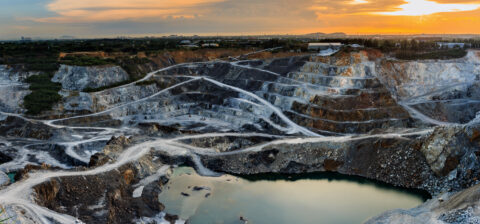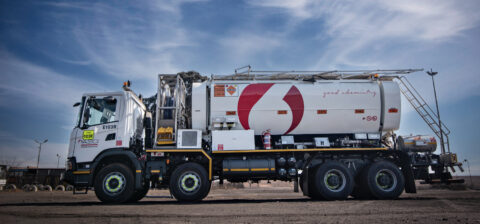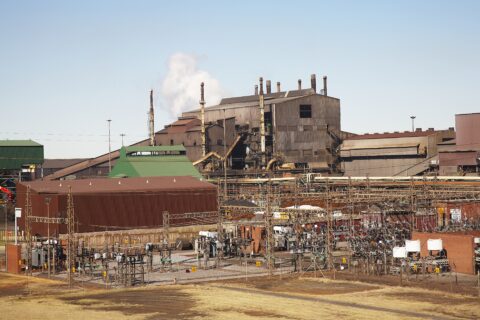SA Mining
The Future Of The Natural Diamond Market
Delegates at the recent Joburg Indaba were given a comprehensive view of the future of the diamond industry by the CEO of De Beers Group, managed operations, Moses Madondo.
He pointed out that as part of the Anglo American group, De Beers operates globally, participating in every part of the diamond value chain – upstream, midstream and downstream.
“To begin with, we have our mines in Southern Africa and Canada, making us the world’s largest diamond producer. Together with our joint venture equity partners, we produce more than a third of the global supply of diamonds,” he says.
“Moreover, we recover these diamonds from stable, ethical countries, with strong track records and high operating standards for diamond production, which is as important to us as it is for those who buy our diamonds.”
Turning to the natural diamond supply, he indicates that the company has recognised that the company is already past the peak for diamond supply, despite extensive exploration. In fact, only one commercial discovery has been made in the 21st century – the Luele mine in Angola.
“We have aspirations to begin production in Angola by the 2030s, but the broader outlook shows a decline in global demand production. While this may create supply pressures, it also offers price growth potential.”
A challenging year
“It goes without saying that 2023 was an exceptionally bad year for the diamond industry. However, it’s worth remembering that 2021 and 2022 saw record all-time levels for demand for natural diamonds.”
Of course, he adds, in 2023 the success of the preceding years meant that heavily stocked inventories met a significant decline in demand. Obviously, in the good period, midstream went hard and bought and polished and cut diamonds, expecting a market that was going to continue growing. But it didn’t.
“This economic landscape created challenges across the luxury sector, with high inflation rates affecting disposable income. The Chinese demand, particularly, dropped quite drastically. On top of this, we saw a lull in demand for engagement rings as a result of couples not forming during pandemic-related lockdowns,”
says Madondo.
“In South Africa, we saw a massive plummet of some 44% between 2022 and 2023. Export volumes declined by an alarming 49% and our export earnings were cut nearly in half, descending from R15.3-billion to R7.8bn. It’s been a pretty difficult time in the market, and unfortunately, we have to acknowledge that this downturn has continued in 2024.”
Nonetheless, he says, De Beers remains committed to the long-term potential of the diamond market. In addition to Venetia, the company’s attention is on other key projects, as well as concentrating on exploration efforts. These will mostly be focused on Angola, which De Beers believes to be the best place in the world to find another big kimberlite pipe. Of course, he adds, the business has also had to make some difficult decisions around pausing or stopping some projects in Canada.
Natural vs lab-grown
“A key focus for us has been developing our industry-leading tracer, as well as diamond proof technologies to connect our diamonds with their country of origin, because provenance has become important in the downstream,” says Madondo.
“While we are preparing to weather the current challenges and emerge stronger in the long term, it is essential that we navigate the immediate obstacles with real care and precision.”
Speaking on the subject of lab-grown diamonds (LGDs), he says this is something that many people misunderstand. De Beers has always said that the price of natural diamonds, which are made by the Earth over the course of millions of years, cannot be compared with LGDs, which can be made in a machine in a few weeks.
“We have always expected and stated that the prices will bifurcate, and this process is accelerating all the time. LGDs are perhaps the most widely discussed and most widely misunderstood issue for the natural diamond industry.
“I should also debunk the myth that one cannot tell the difference between LGD and natural diamonds. It definitely can be told, and De Beers has been a leader in synthetic detection technology for decades already.”
He explains that De Beers, as a leader in synthetic detection technology, has developed a diamond verification instrument that is extremely accurate and reliable – having a 0% false positive rate. That means there’s never been a diamond that was not natural that has not been identified by the machine. This is unrivalled worldwide.
“Our verification technology division has also designed a consumer-friendly version of this device, and we recently launched the prototype – called Diamond Proof – at the JCK jewellery show in Las Vegas. We are aiming to make these available for purchase by May of 2025, as there is a big demand for these machines,” he says.
“Of course, the sanctions on Russian diamonds will help our supply chains, and are something that we are supporting and helping the market to implement. This tracer device, and the ability to trace diamonds, is going to be very important.”
Reasons for optimism
Ultimately, he notes that despite the challenges outlined, there are reasons for optimism in the long term. De Beers expects that global demand for natural diamonds will grow by 3% annually driven largely by the US market.
“We also believe that the Indian market will be growing strongly too, and expect around 8% growth in that environment. We know that China is currently under pressure, but we do expect some growth in this market too, and we are also seeing Japan start to bounce back.
“While we currently face difficult times, and there are some tough decisions we are going to have to make, we expect that we will emerge stronger when we come out on the other side, and can confidently say that we still absolutely believe in the future of natural diamonds,” says Madondo.







 Sign-up and receive the Business Media MAGS newsletter OR SA Mining newsletter straight to your inbox.
Sign-up and receive the Business Media MAGS newsletter OR SA Mining newsletter straight to your inbox.